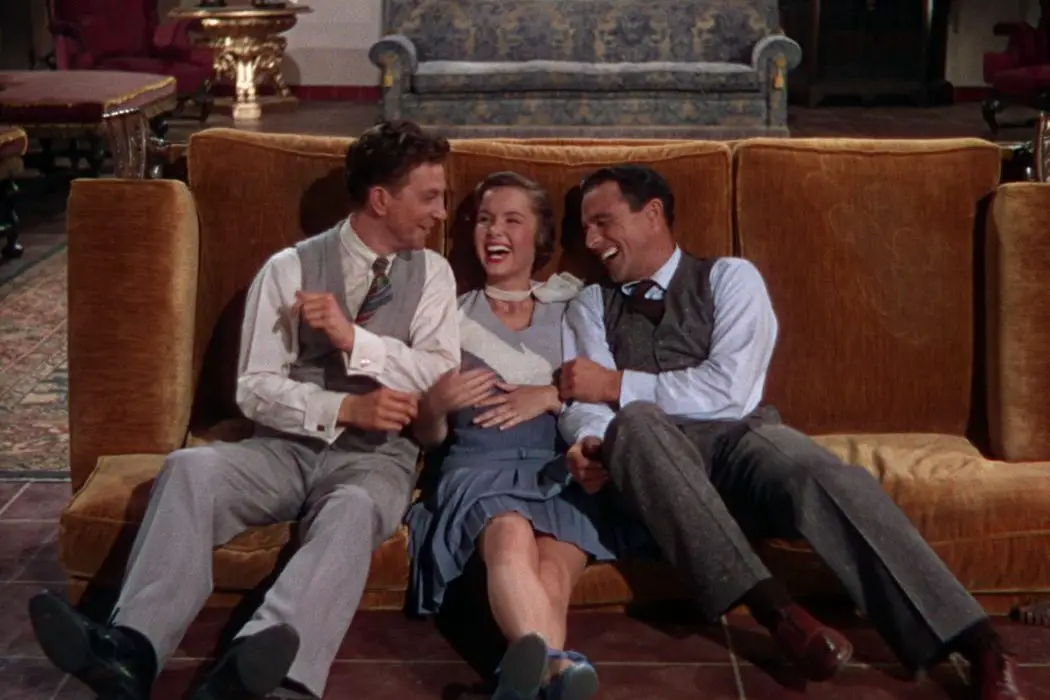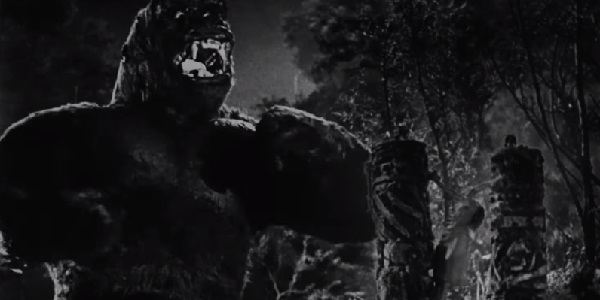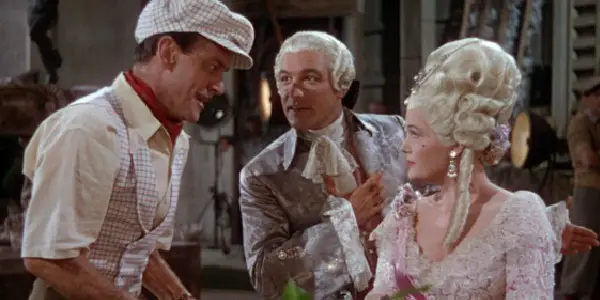Understanding Camp Films & Their Strangely Tasteful Descendants

Ben is a former student of cognitive science who is…
For those of us who love talking about movies in-depth, there are times when it becomes very hard to explain why some movies are great, or to put the feelings they inspire into words. This goes especially for those movies whose appeal seemingly has nothing to do with the usual notions of elegance or consideration. But it’s good to appreciate films whose value is hard for us to place. Gravitating toward things that diverge from the realm of normal good taste reminds us of both the limitations and powers of what we’re watching: we remember that films affect us in ways that don’t always offer us wisdom or perspective, but also that we can share sensibilities with others over some unusual and unexpected things.
This kind of distinction and appreciation is part of what constitutes the rather vague concept of “camp” art. The best description of what “camp” means as it applies to art is probably Susan Sontag‘s 1964 essay “Notes on ‘Camp'”, and while that essay doesn’t apply to film exclusively, it does suggest that film fans are likely to appreciate the “camp” sensibility because people tend to approach movies in a “high-spirited and unpretentious” way. (In any case, Sontag was an astute film critic herself.)
Sontag‘s essay revolves around her definition of “camp”, which seems to have two major points. The first is that it involves the appreciation of artifice and style, such that we appreciate something for how artificial it seems, rather than whether that artifice is beautiful or not. The second is that if camp works of art have some sort of content or message, it is rendered impossible to take seriously because of the degree of artifice. To put it crudely, camp films leave us too busy reflecting on how extravagant they are to reflect on their messages at the same time.
The recent success of The Shape of Water gives us reason to take another look at this concept. It draws heavily on earlier films, but feels different from them. It takes influence from films that had camp appeal without having it itself. Going over what that appeal actually was may give us a broader perspective on current and future films that borrow from them but don’t quite replicate what they did.
So Bad it’s Good?
For a few examples of such films, and how they differ from other films, we can look to Armond White‘s critical review of 2016’s La La Land. He chastises La La Land for being too referential and self-conscious to be camp, and names Singin’ in the Rain, West Side Story, and the work of Jacques Demy as properly camp films. Obviously many would disagree that this is necessarily a bad thing about La La Land, but otherwise the point is well-taken: the other musicals White mentions are concerned with ornately and uncritically putting emotions on display, while La La Land is more focused on questioning its characters. La La Land‘s direct, telegraphed references to other films are a part of this, making its artifice part of how it analyzes itself.
Part of the reason we receive Singin’ in the Rain this way is because of how impressive its choreography and physical performances are. Jacques Demy‘s films are similarly impressive for their use of color and compositions. This is to say the uncritical expression of emotion we recognize in camp films is certainly not a bad thing. These films can display profound competency. Nevertheless, there’s a reason Sontag says that a work of art can be “too good” or “too important” to have camp appeal.
One of the films she names in her essay, and one of the breed that influenced The Shape of Water, is 1933’s King Kong. That film contains elements we might think would make it difficult to take seriously. Yet the film is not only loved, it’s considered one of the greatest of all time by a significant number of people. Its obvious artifice and the indulgences it takes with its premise maybe prevented it from having the same kind of positive reception we might expect for a more low-concept film, but it’s positive nonetheless.

And when people read into the film, they discuss connotations. Some films try to tell us something, and whether or not we enjoy them depends on whether they succeed or fail in doing so. Camp films either don’t try to tell us something, or try and fail, but that doesn’t bar us from enjoying them. If we enjoy them, it’s because we appreciate something about their artifice and indulgence. People have found a lot to discuss in King Kong when they asked how things in the film coded for or otherwise related to things outside the film itself; but the appeal of the film lies elsewhere (except may for some people who simply enjoy analysis). More importantly, a film being camp has to do with how we feel while watching it; understanding a film’s connotations and associations is a more removed from that feeling than understanding the ideas that make us think a film is profound.
This is part of why The Shape of Water, like La La Land, isn’t camp. At the beginning of the film, the narration tells us we’re about to see a story about love and a “monster” that challenged it. By the end of the film, we easily understand who that “monster” is, and we understand what that means for the other characters. It tries to tell us something and succeeds in a way King Kong doesn’t. If it failed to carry across this message to the viewer, the film wouldn’t work. In this respect, The Shape of Water is “too good” to be camp.
Levels of Rebellion
Because of who the “monster” is in The Shape of Water, we could easily characterize it as a film about rebellion. The monster is a monster because it intends to enforce some notion of order on the other characters. In King Kong, the monster serves a completely opposite function; and, obviously, if a camp film must fail to be “about” anything if it tries to be at all, then no camp film can really be “about” rebellion in the way The Shape of Water is.
Nevertheless, some of them may be considered “rebellious” because they fly in the face of good taste. Singin’ in the Rain has aspects of it that are almost childish. It portrays its antagonist as a caricature, but she doesn’t seem to stand in for anything that warrants such mockery. And aside from telling us that we shouldn’t like this character, the film doesn’t tell us much. Like with King Kong, some analytical people might draw wisdom from Singin’ in the Rain; but the film doesn’t use wisdom to appeal to our sensibilities.

The camp appeal of Singin’ in the Rain lies in how lavish it is in its attempts to appeal to us without being sophisticated. It’s not enough for a film to be appealing and unsophisticated to be camp; it has to be bombastic, ornate – it has to display a certain level of investment or expenditure in its lack of sophistication. Camp films fly in the face of good taste by going to noticeably great lengths to do something other than what would be considered in good taste, or failing to do such a thing.
So, while The Shape of Water might not be a camp film itself, it does reflect the sensibility camp films appeal to. It borrows from many other films, and by looking at exactly what parts it borrows, we see what it appreciates. It’s never clearer than when it departs into a black-and-white dance number. We could even say that to some extent, The Shape of Water is “about” – and therefore cannot have – camp appeal. Sontag herself says something to a similar effect: “to talk about Camp is…to betray it”.
The Influence of Aestheticism
Films like The Shape of Water and La La Land are a little strange: they take so much influence from earlier films, but in doing so neither imitate nor subvert them. They celebrate older films, but we don’t necessarily understand through them what effects those older films had. We do understand that they left a profound impression on some people despite seeming self-indulgent and not “about” anything when we turn to examine them.
It remains to be seen how many more popular films like The Shape of Water or La La Land there’ll be. But even if there are few, it’s still good to understand the camp sensibility. These new, referential films don’t have the same appeal as camp films, but by comparing them with camp films while understanding their differences, they may come to serve one of the same functions: to remind us of the range of ways in which a movie can leave a noteworthy impact on someone.
What are your favorite camp movies? Tell us your thoughts in the comments below!
Does content like this matter to you?
Become a Member and support film journalism. Unlock access to all of Film Inquiry`s great articles. Join a community of like-minded readers who are passionate about cinema - get access to our private members Network, give back to independent filmmakers, and more.
Ben is a former student of cognitive science who is currently trying to improve his writing style and ability to understand and appreciate films containing unfamiliar perspectives. He tries not to hold films to a strict set of criteria, but does believe that strong movies can change your outlook on the world. His favorite films include Whisper of the Heart, Hellzapoppin', Foolish Wives, 42nd Street, and the work of Charlie Chaplin.













